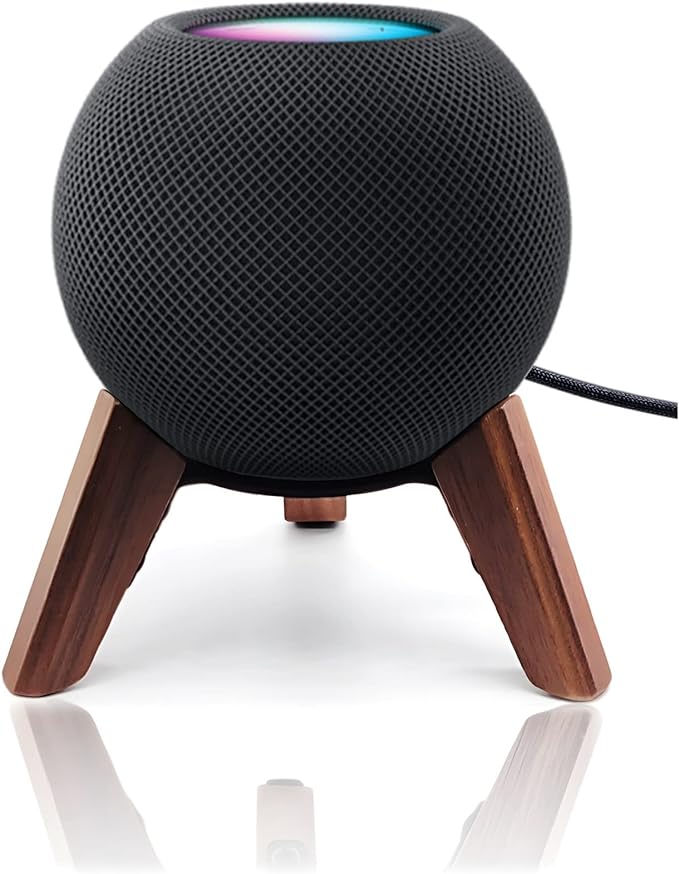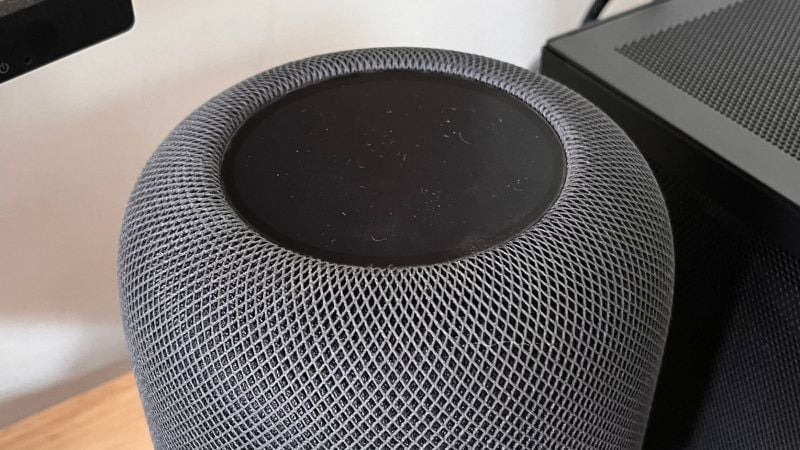Apple’s HomePod – once the darling of the smart speaker world – has had a journey as dynamic as the music it streams. Beloved for its stunning audio quality and seamless integration with the Apple ecosystem, it stumbled with limited third-party app support and a hefty price tag.
Now, a whisper through the rumor mill suggests a potentially transformative redesign: a HomePod with a curved LCD display. But just like a half-remembered melody, does this futuristic vision hold the harmony of success, or is it destined to be a discordant note in Apple’s smart home symphony?

The Allure of Fusing Sound and Vision
Imagine a HomePod that’s not just an invisible sonic maestro, but a captivating visual centerpiece. Its sleek, minimalist form draped in a vibrant, curved LCD display, pulsating with the rhythm of your music, displaying album art, lyrics, or even the weather forecast.
This fusion of sight and sound could be a game-changer, transforming the HomePod from a one-dimensional speaker into a multi-sensory experience.
Use Cases Beyond Music
Think beyond just music. Cooking with real-time recipe videos displayed on the HomePod while your hands are covered in flour? Imagine following along with yoga poses, guided by an instructor on the screen while the HomePod fills the room with calming music. The possibilities for interactive experiences, visual feedback, and enhanced functionality are as boundless as the human imagination.
Potential Pitfalls of a Visual Overhaul
However, this potential future symphony isn’t without its potential discords. Integrating a display adds complexity and cost, potentially driving up the price tag and making the HomePod even less accessible to the average consumer. Battery life, always a concern with feature-rich devices, could take a hit, requiring more frequent charging.
Privacy concerns could also arise. A device with a built-in camera, which might be necessary for features like video calls, would need robust security measures and clear user control to avoid alienating privacy-conscious customers.
My Take: Minimalism Over Features
As a HomePod owner, I’ve come to cherish its clean, unobtrusive minimalism. While a snazzy display could enable some nifty features, I worry it risks overwhelming the iconic aesthetic. And as much as I’d enjoy visually-enhanced music experiences, audio fidelity remains priority number one.
Ideally Apple strikes a balance – perhaps a small display limited to ambient information like weather and clock. But an immersive media hub risks muddling the HomePod’s core identity as a stellar sounding speaker.
Evaluating Success Factors
Ultimately, the success of this potential redesign lies in striking a delicate balance. Apple needs to innovate and stay ahead of the curve, but without sacrificing the core values that made the HomePod special in the first place.
By prioritizing seamless integration, exceptional audio quality, and a user-centric experience, while addressing potential concerns about cost, privacy, and functionality, Apple can turn the “HomePod with a display” from a mere rumor into a harmonious reality.
Overcoming Technical Barriers
Implementing a curved LCD display within the HomePod’s compact enclosure introduces engineering challenges like heat dissipation and seamless hardware integration. Additionally, factors like screen responsiveness and touch accuracy are paramount, or the user experience could quickly turn frustrating.
But Apple has a strong track record overcoming daunting technical constraints. With innovative thermal design, custom display drivers, and a commitment to refinement, a LCD-adorned HomePod could yet hit the right notes.










Add Comment